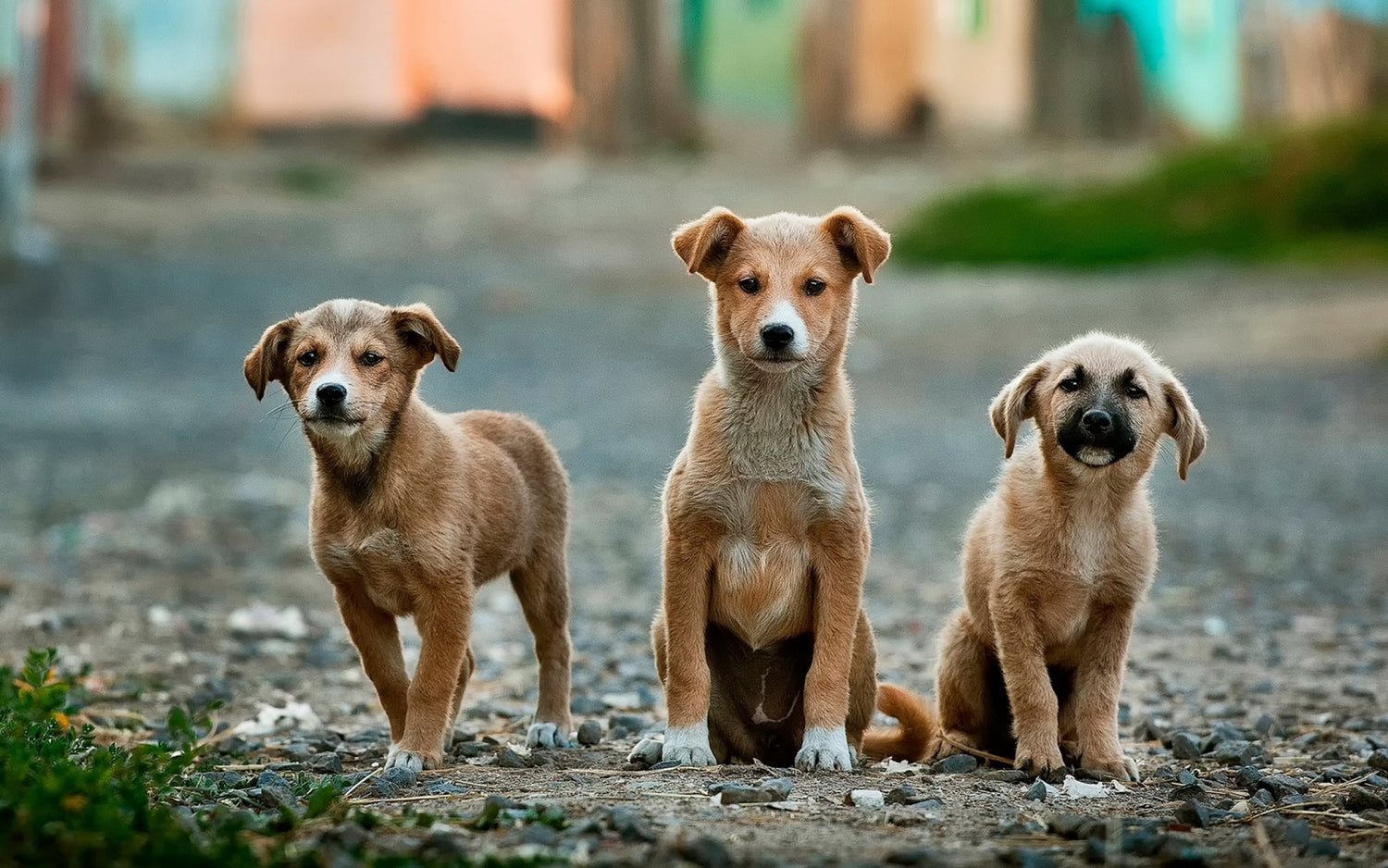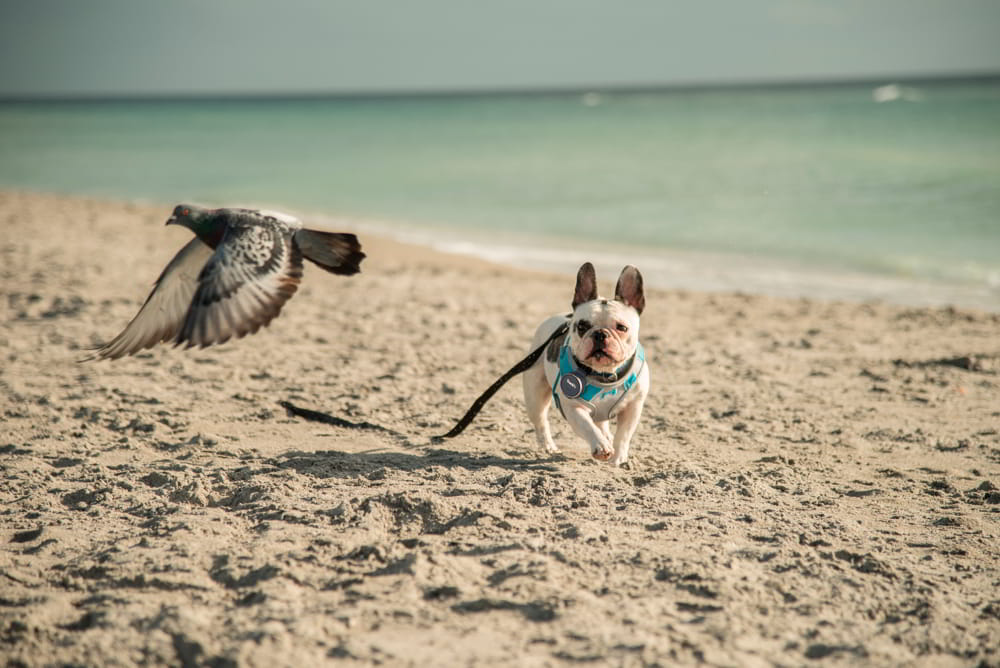Everything you need to know to give your dog adoption story a happily ever after.
If you’re considering dog adoption or rescue, TrackiPet applauds you! Dog adoption is one of the most rewarding things a pet parent can do.
And, sometimes, one of the most challenging.
Why is that? Well, because adopted dogs come into our homes with a set of experiences that we can’t control or usually even know. Many adopted dogs adapt easily to their new homes anyway. Others need more time and patience. All are deserving of love and safety.
To set you up for success, let’s go over best practices during the following dog adoption stages:
- Pre-adoption
- Settling in
- Long-term care
- Giving back
And for inspiration, we’ll be sharing some heart-warming rescue stories along the way!
Pre-adoption
Sometimes, you’ll have months to plan for your rescue dog’s arrival. Many shelters, rescue networks, and previous owners offer a thorough transition process. Other times, they show up in your life without warning like a gift you didn’t know you wanted!
Assuming you have at least a little bit of time to prepare, here are some steps you can take to make your adopted pup’s transition a smooth one.
Choosing the right dog
Most shelters and rescue networks offer something like a catalogue of the dogs in their care. As you peruse your options, it’s important to be realistic about the factors that will make you and your new rescue a good fit.
The size and layout of your home, your family structure, and the time and resources you can dedicate to exercise, training, and medical care all help you determine what kind of dog would be happiest with you. Here are some things to consider:
- Breed
- Age
- Gender
- Size
- Health and Special Considerations

Learning about your potential match
The more information you have about your new rescue, the more prepared you’ll be to meet its needs. A medical history and a summary of previous living conditions are great places to start when they’re available!
This sort of knowledge will help you understand your new pup’s behavior and the training techniques that are most likely to be effective. You may even be able to provide consistency in training commands, toys, or diet that your new dog will find really comforting amid all the change!
Many rescue dogs come with incomplete histories. That’s ok! Patience, love, and observation will get you far.
Preparing the home
Rescue dogs have often lacked stability in their lives or had their stability taken away from them. Preparing your home not only lays the groundwork for clear communication and expectations but also mitigates the negative effects of certain behaviors that arise in times of change.
Set up pooch’s physical living space. It might be limited in the beginning and grow with time and trust. Dogproof this space by:
- Removing chemicals
- Removing fragile or dear items
- Arranging for easy clean-up of potty accidents
- Securing cables
- Setting boundaries with toddler gates
Finally, arrange pooch’s bed (and/or crate) and toys!
You’ll also want to pre-plan a routine for feeding, exercise, potty, and training time. Make sure you’ll be able to stick with it for the long term. Clear your schedule as much as possible for the first few weeks after pup moves in to maximize bonding and training time.
Success Story: Rebuilding Health
Butterball was found on the street as a puppy, emaciated and full of fleas. Fortunately, a good Samaritan found her and brought her to an excellent shelter with a strong rehabilitation program. She was nursed back to health and given all the best until she found her loving forever home!
Triplets Pickle, Pepper, and Pesto were found with bad cases of mange, a disease that affects the fur and skin. An amazing rescue team took them in and gave them the care they needed. All three pups have fully recovered and been successfully rehomed!
Settling in
Congratulations! You’ve now welcomed your brand new rescue. How can you help them settle in?
The vet
Depending on your rescue dog’s age and history, they might need basic medical care like vaccines, microchipping, sterilization, or a general checkup. It’s crucial that these are completed before you introduce socialization and outdoor exercise into your routine. Even if pooch is up-to-date, it’s useful to build a strong relationship with your vet early on.
Creating a safe, calm environment
Avoid overstimulation during pup’s early days in your home. Introduce them to their space, toys, and routine with calm and consistency. If you have kids, make sure an adult is around during their early interactions with pup. And maybe wait a while before bringing playdates home.
Even if your new rescue is already well trained, big changes can cause unexpected behaviors. Accidents, chewing, and guarding are not unusual and should be treated with patience. Be on the lookout for symptoms of medical distress or behavioral issues that will require-long term training.
Diet
Whenever possible, maintain consistency with the diet that pooch is used to. If you’re going to make a change, do so gradually, mixing increasing amounts of the new food with the old one.
Watch carefully how pooch responds to their diet.

Success Story: Overcoming Trauma
When Oakley first arrived in his forever home, he showed signs of serious trauma. He was wary of toys (especially squeaky ones), reluctant to accept food, and had a nervous demeanor. His amazing new parents made it their mission to help him overcome his past and blossom into the trusting, fun-loving pup they knew he could be.
Then the pandemic struck. Suddenly, they needed Oakley’s support just as much as he needed theirs. Luckily, being stuck at home allowed them to dedicate tons of time to training and bonding and Oakley advanced quickly. Now he’s absolutely thriving, thanks to the love and attention of his adopted parents.
Long-term Care
In many ways, long-term care for a rescue dog is the same as for any other. They need their vet visits, grooming, age and breed-appropriate diet and exercise, and ongoing training.
But an adopted dog may have different benchmarks than other dogs. The lasting effects of abandonment, abuse, or puppyhood illness may be apparent for a long time to come. Stay patient and committed and always celebrate small wins!
Success Story: Senior Dog Adoption
A lot of adoptive pet parents hesitate to take in senior dogs. It takes strength to bond with a beloved pet knowing that a hard goodbye is on the horizon!
Meet Lady, an elderly yellow lab whose previous owner sadly passed away. His son fostered her but couldn’t really provide the home she needed and ended up giving her to a local shelter. On her first vet visit, the caring professional knew immediately that Lady would be coming home with her.
Lady needs a lot of special care, but she returns the favor with endless love, snuggles, and patience with the children in her new family! Now this special girl can live out her days surrounded by people who adore her.
Giving Back
Dogs are endlessly sensitive and LOVE to be useful. This makes certain dogs ideal for special companionship tasks! Training a rescue as a service dog for a member of your own family or as a therapy dog to collaborate with a local non-profit is a great way to integrate pooch into the community.
Remember, not ALL rescue dogs can be trained as service dogs. Here are some traits that make a great candidate for service training:
- A calm temperament
- A strong attachment to/desire to be with humans
- A quick learner
- No preexisting behavior problems
- 1-2 years of age
- Adequate physical condition for the necessary tasks
Service dogs can be trained to assist with a wide range of physical and mental conditions including PTSD, epilepsy, mental illness, blindness, deafness, and mobility issues.
If you think your rescue dog would make a great service dog, there are a few ways to get them trained up:
- A certified training program
- One-on-one training with an expert
- At-home training
Training should be fun for pooch. If they show signs of discontent, they may need a career change.
Whether pooch becomes a dedicated service dog or just loves to visit hospitals and care homes, they’ll absolutely love the praise, bonding, and sense of fulfillment!

Success Story: Ready for Duty
Service Dogs UK trains rescue dogs to assist veterans struggling with PTSD.
“The dogs typically assist by waking their handler from nightmares, fetching medication, interrupting anxiety attacks and depressive behaviours, taking them to the nearest exit when overwhelmed and positioning themselves to provide tactile comfort and support when needed.”
These canine heroes are matched with human heroes to help both move forward with fullfilling, rewarding lives. Veterans and rescues go through the training program together, building an unbreakable bond along the way.
Veterans report a renewed zest for life. Pooches report dedicated care, lifelong friendship, and a sense of purpose!


